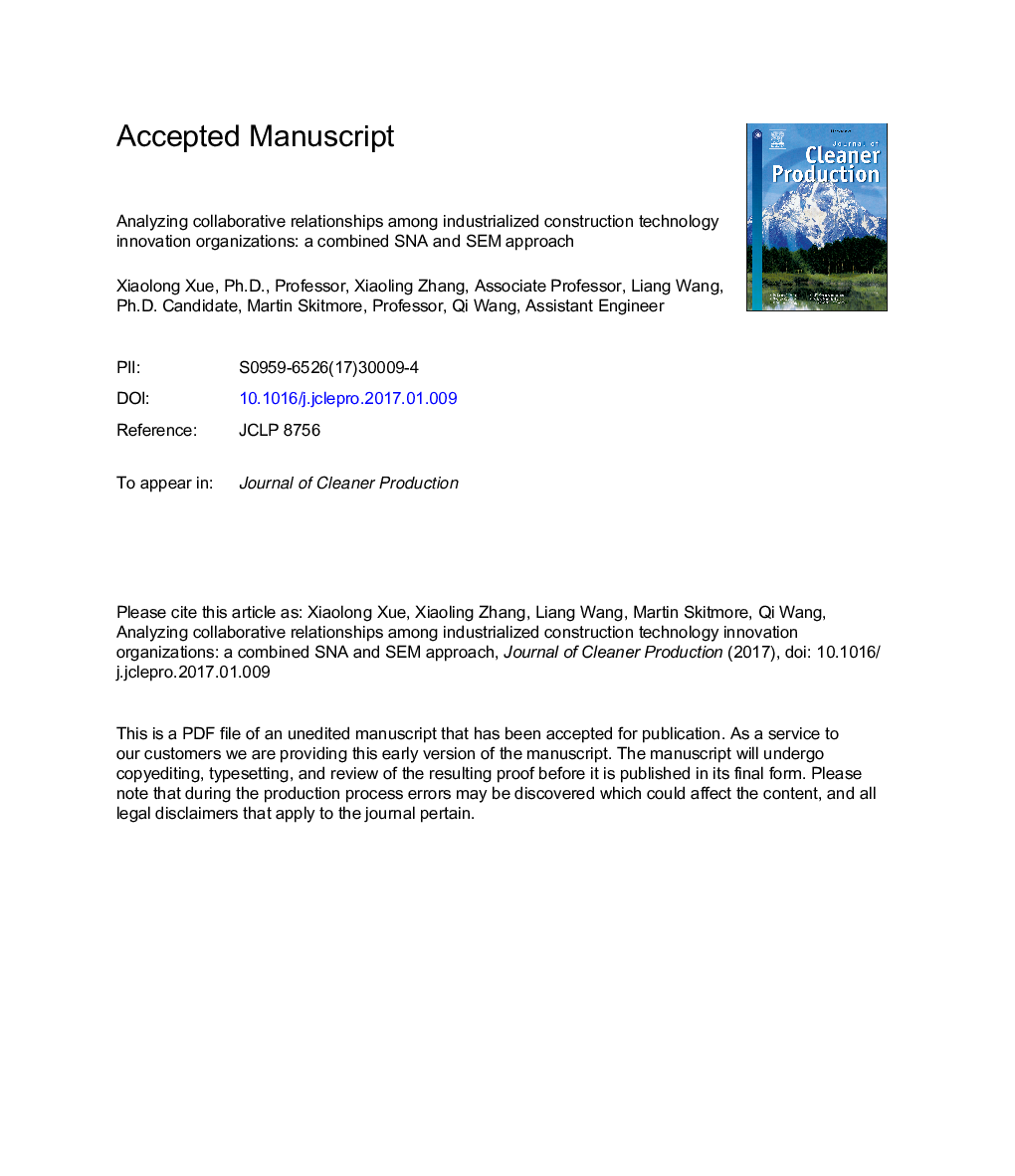| Article ID | Journal | Published Year | Pages | File Type |
|---|---|---|---|---|
| 8099724 | Journal of Cleaner Production | 2018 | 50 Pages |
Abstract
Industrialized construction technology (ICT) is widely used and becoming the new green construction method, but its development is being hindered by lack of innovation. To improve this, stakeholders are endeavoring to develop more innovative methods by inter-organizational collaboration. Despite its extensive use by other industries such as manufacturing, little is known of how to successfully apply collaborative innovation to ICT. This paper develops a method for studying the effects of a variety of aspects of existing collaborative relationships for ICT innovation using a combination of social network analysis (SNA) and structural equation modeling (SEM). A set of hypotheses are proposed concerning the expected influence of SNA factors of interaction frequency, emotional intensity, reciprocal exchange, network size, network density, centrality, relationship strength, network position, promotion, enterprise scale, nature and experience on collaborative innovation. Using questionnaire data obtained from a large sample of practitioners, SEM is then used to identify the key indicators involved and the extent of their effects on innovation. The paper constructs a collaborative ICT innovation relationship model in which the strengths of the interaction paths between stakeholders are obtained. With a single exception, this confirms all the hypotheses. Most of the SNA-based a priori hypotheses are shown to be well supported, which indicates the suitability of the SNA concept in developing collaborative ICT innovation. SNA is therefore confirmed as providing a suitable conceptual basis for the modeling and analysis of ICT innovation relationships. From this, a set of recommendations are provided to guide operating companies, designers and contractors in improving their collaborative innovation efforts. The results enable suggestions for enhancing collaborative ICT innovation capacity to be advanced to promote the interaction between stakeholders and the occupation of strategic positions. Although the study is carried out in the context of China's prefabricated housing construction, the methods can be adopted in the broader global community.
Related Topics
Physical Sciences and Engineering
Energy
Renewable Energy, Sustainability and the Environment
Authors
Xiaolong Xue, Xiaoling Zhang, Liang Wang, Martin Skitmore, Qi Wang,
